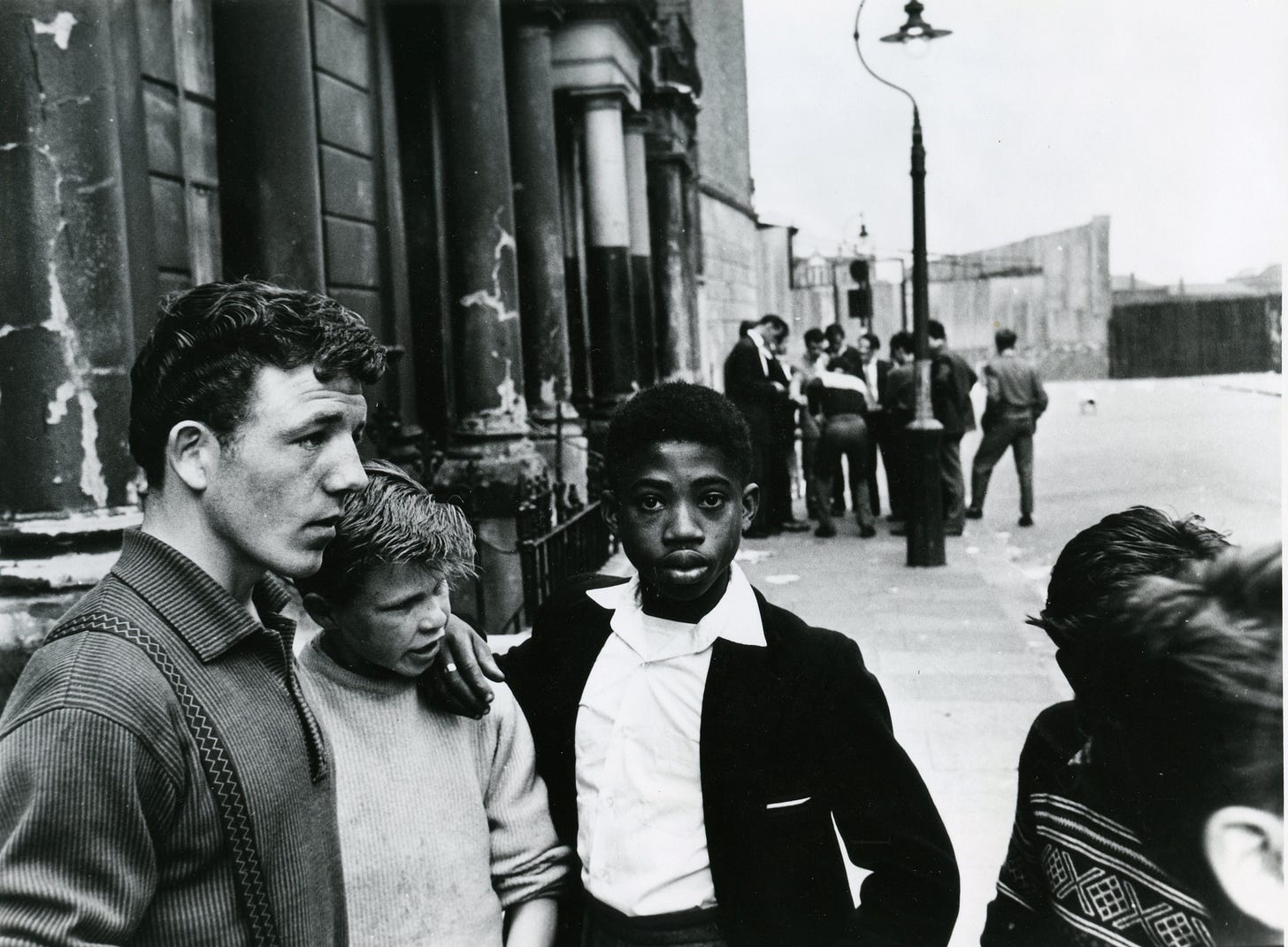Lads lads lads
Roger Mayne's photographs of post-war youth at the Courtauld is one of this week's London highlights

AT LAST a mini-heatwave. Having dug out a hot water bottle last week, this feels like a huge improvement. I’m relieved, mainly because I was fretting about keeping warm tomorrow at Garsington Opera in Oxfordshire (one of those hugely enjoyable country house arrangements where you lug a picnic with you on the train which you then eat in sweltering black tie with a knife and fork), to see Benjamin Britten’s A Midsummer Night’s Dream.
I’m telling you this because this particular show is coming to the Proms as a semi-staged concert later in the ‘summer’, so I can tell you next week what it’s like and you can add it to your list if it’s good. Which I think it will be.
This week
I adored Roger Mayne: Youth at the Courtauld Gallery - the first photography exhibition that the gallery has held, remarkably. Mayne was an acclaimed post-war photographer, self-taught, having discovered the medium while studying chemistry at university.
Mayne moved to London in 1953 and found inspiration in the communities living amid the dereliction of the war-scarred city. This show focuses on his depictions of young people, from tots (such a newspaper headline word) to teenagers, particularly in the long-gone location of Southam Street, on the northern edge of Notting Hill, where he kept up a devoted documentary practice from 1956 to 1961.
I found it captivating. Through its working class youth, he captures a society in transition - the pain and thrill of huge social and political change. His groups of kids are racially diverse, all ages mixed up together and roaming the streets with the inevitable independence that comes when you have busy parents striving all hours just to keep food on the table.
I especially like the images of kids on the cusp of adulthood, how he captures that liminal state; a girl walking through a market who almost shapeshifts in front of your eyes from child to young woman, a group of lads whose developing swagger is belied by the softness of their faces - vulnerable and yet perched on the edge of something new and exciting. I loved it - it’s on until September 1.
Alongside it is a small show of Henry Moore drawings, though I didn’t find them hugely exciting. It’s free to see though, once you have a ticket to the Mayne, and there are a few from his series of sketches of people sheltering in tube stations during the Blitz, which I like very much - he very nicely evokes in just a few strokes the exhaustion that is bred by that very particular coupling of boredom and fear, and the deep discomfort of trying to sleep in your clothes.
As part of my effort to see more movies, I went to a screening this week of quite a strange film, the feature directorial debut of American playwright Annie Baker (I really liked her last play at the National Theatre, Infinite Life, which was about the complexities and mysteries of physical pain and desire in a failing body, but her stuff is contemplative sometimes to the point of dragging).
Janet Planet, released tomorrow, is an extremely measured (some might say slow) coming of age film set over the summer of 1991 in rural Massachusetts, and is told mostly from the perspective of 11 year-old Lacey, who sceptically observes as her hippie acupuncturist mother Janet (an excellent Julianne Nicholson) invites three successive people - a taciturn lover, a free-spirited friend and a ridiculous bearded mansplainer - into their quiet, insular life together.
Keep reading with a 7-day free trial
Subscribe to The London Culture Edit to keep reading this post and get 7 days of free access to the full post archives.




